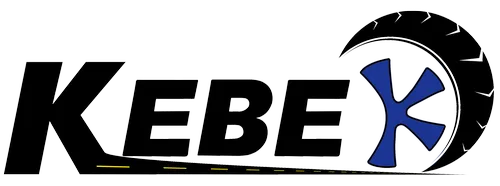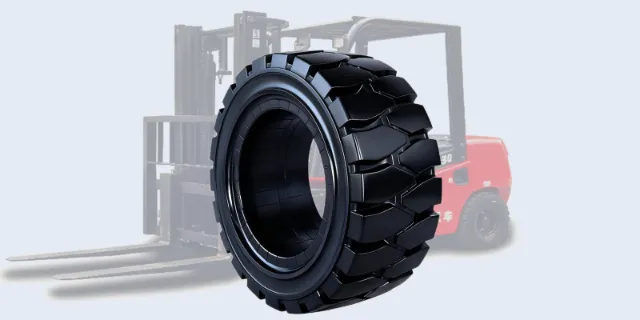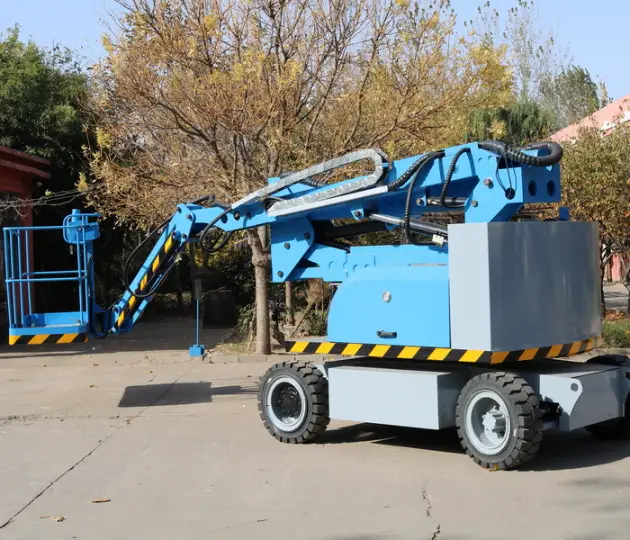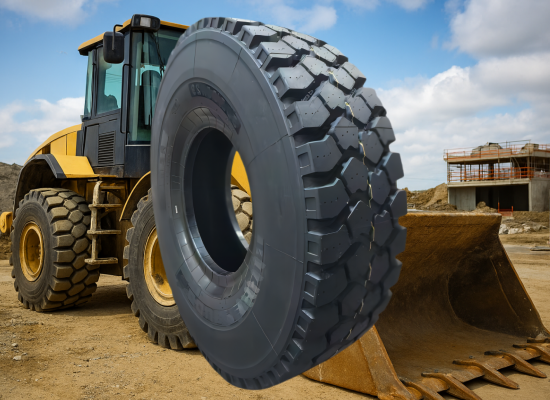In logistics and material handling, every minute of equipment downtime translates into lost money. Choosing the right forklift solid tires isn’t a simple purchase – it’s a strategic investment that affects operational efficiency, safety, and total cost of ownership. Among maintenance-free options, solid rubber tires and foam-filled tires are the two most widely used solutions. This guide clearly compares both to help you make the best decision for your fleet.
Core characteristics: indestructible vs. balanced performance
Before you decide, understand how each tire type works and what it’s designed to deliver.
Solid rubber tires: ultimate durability and stability
- Key advantages:Built from high-density rubber in a single molded structure, solid tires are 100% puncture-proof. Nails, glass, and debris won’t stop your operation, eliminating blowouts and unplanned downtime. Their rigidity delivers unmatched load stability, especially for high lifting and precise stacking of heavy pallets. In terms of lifespan, solid rubber is often the most durable choice.
- Main limitations:With minimal elasticity, solid tires offer poor shock absorption. Operators may experience fatigue during long shifts, and vibration can transfer into the chassis, accelerating component wear. They are best suited to smooth, flat indoor floors, not uneven or mixed terrain.
Foam-filled tires: the balanced choice for performance and safety
- Key advantages:Foam-filled tires inject specialized polyurethane foam into a pneumatic tire casing, retaining deep traction tread and excellent shock absorption. They prevent flats without requiring air, while providing significantly better ride comfort than solid tires. This protects operator health, safeguards cargo, and improves control on varied surfaces. Superior traction makes them suitable for outdoor yards, slopes, and transitions.
- Considerations:Initial purchase price is higher, and the foam core may face heat dissipation challenges during prolonged high-speed travel. For typical forklift duty cycles, this is manageable with proper usage and specifications.

How to choose: focus on these three factors
Your decision should be grounded in the realities of your application. Use the following criteria to match tires to your environment, workforce, and cost structure.
Operating environment (the decisive factor)
- Choose solid tires when:
- Debris-heavy indoors: Metal shavings, broken glass, nails, and other sharp fragments are common.
- Smooth floors: Warehouses and factory workshops with flat, polished surfaces.
- Priority: Absolute puncture resistance and load stability for high-lift tasks.
- Choose foam-filled tires when:
- Mixed indoor/outdoor routes: Frequent transitions between warehouse floors, loading docks, and yards.
- Slightly uneven surfaces: Expansion joints, light cracks, asphalt, gravel, and ramps.
- Priority: Traction, shock absorption, operator comfort, and cargo protection.
Operator comfort and safety
- Human factors matter:Modern operations emphasize ergonomics to protect operators and reduce error rates. Foam-filled tires significantly reduce vibration transmitted to the driver, lowering fatigue and the risk of misoperation during long shifts. If workforce well-being and sustained productivity are a priority, foam-filled is the superior choice.
- Vehicle longevity:Better damping lowers shock loads on the chassis, mast, and attachments – potentially reducing maintenance frequency across the fleet.
Total cost of ownership (TCO)
- Solid tires: Moderate initial cost and the longest wear life suggest economical value at first glance.
- Foam-filled tires: While the upfront price is higher, they can yield greater long-term value by decreasing vibration-related wear, improving operator productivity, and enabling safer operation on varied terrain.
- What to include in your math: Don’t evaluate only the tire price. Consider maintenance, downtime, repair cycles, operator efficiency, and safety incidents. The right tire choice often pays for itself through fewer interruptions and steadier output.
Practical selection scenarios
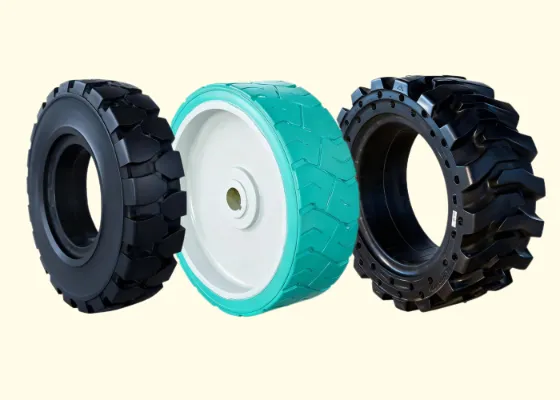
- Indoor heavy-duty stacking on pristine floors:
- Best fit: Solid rubber tires.
- Reason: Maximum puncture resistance and rigidity for high lifts and precise pallet placement.
- Warehouse-to-yard operations with ramps and asphalt:
- Best fit: Foam-filled tires.
- Reason: Superior traction and shock absorption protect operators and cargo across changing surfaces.
- Facilities with frequent sharp debris but controlled speeds:
- Best fit: Solid rubber tires.
- Reason: Eliminate puncture risk and keep uptime high.
- Long-shift ergonomics and reduced mechanical stress:
- Best fit: Foam-filled tires.
- Reason: Lower vibration, better handling, and fewer fatigue-related errors.
Summary and recommendations
There is no universally “best” tire – only the best fit for your operating reality.
- If you need extreme durability and absolute puncture resistance on smooth indoor floors, choose solid rubber tires. They are reliable, economical over their lifespan, and ideal for high-lift stability.
- If you operate across indoor and outdoor environments and prioritize operator comfort, traction, and cargo protection, choose foam-filled tires. They deliver balanced performance and can elevate overall operational quality.
Evaluate your surfaces, load profiles, duty cycles, and human factors. Match your forklifts with the right “shoes,” and you’ll keep your operation moving – safer, smoother, and with less downtime. For procurement, align tire specifications with OEM size, load ratings, speed classes, and tread patterns suited to your terrain to lock in performance and TCO. For more insights on optimizing forklift tire performance, you can read our detailed guide here: Solid Industrial Tires for Forklifts & Material Handling.
